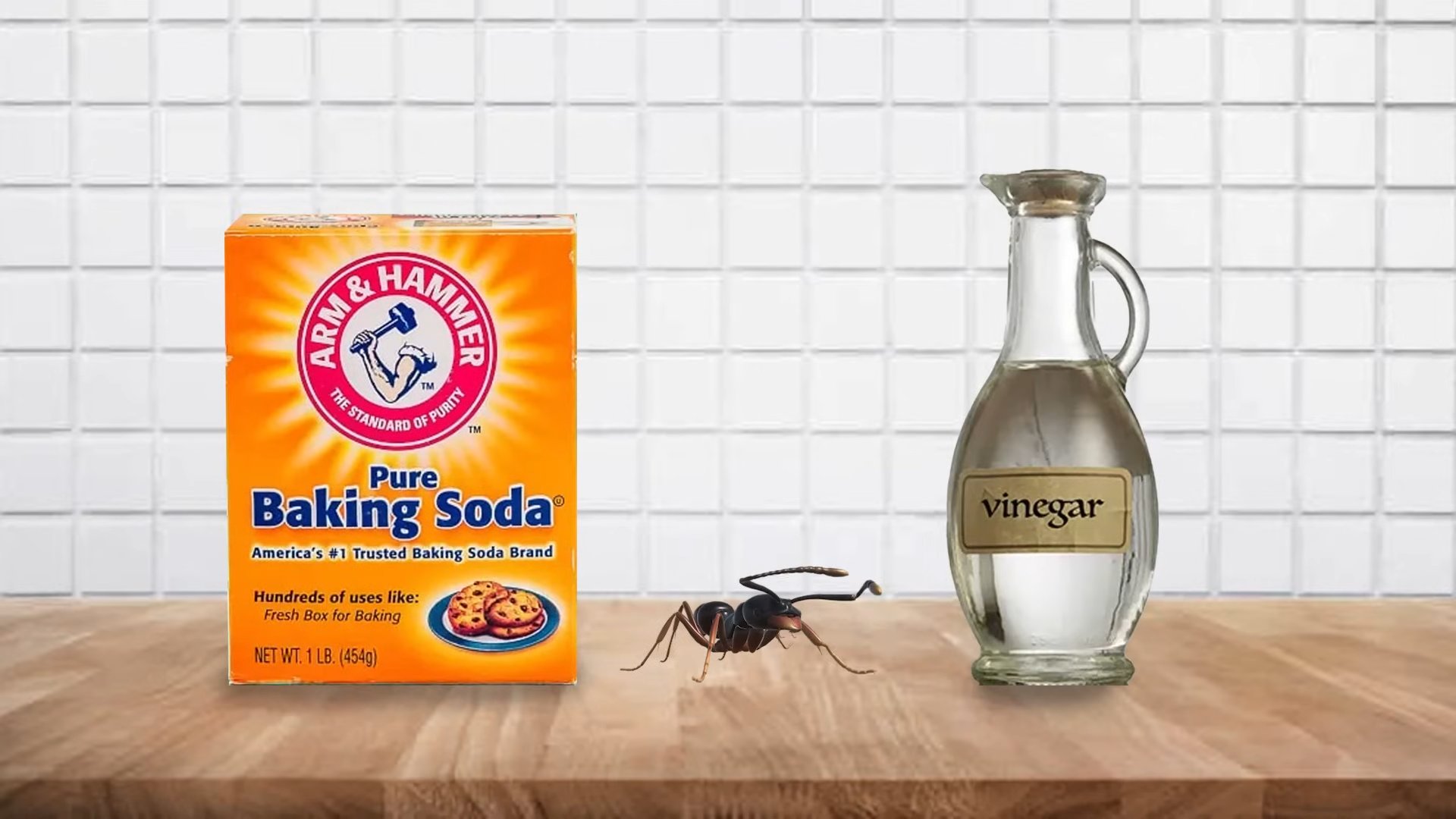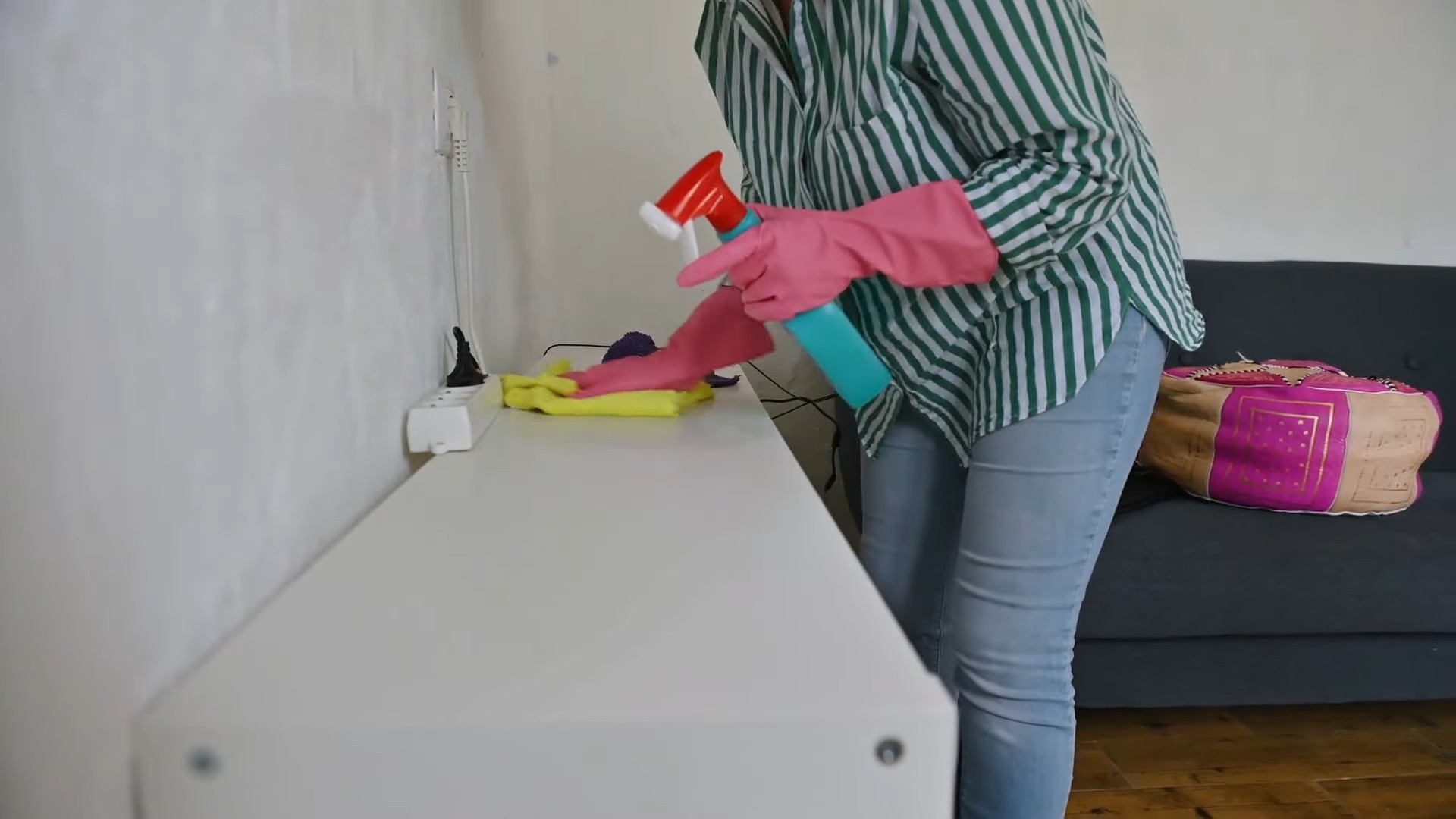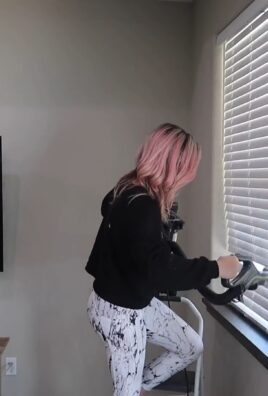DIY Pest Control Baking Soda: Your Secret Weapon for a Thriving Garden!
Are pesky bugs turning your beautiful blooms into a buffet? Don’t despair! I know how frustrating it is to watch your hard work get devoured by unwanted guests. For centuries, gardeners have battled pests, often resorting to harsh chemicals. But what if I told you there’s a simple, effective, and eco-friendly solution hiding in your pantry?
That’s right, we’re talking about baking soda! This humble ingredient, a staple in kitchens worldwide, has a surprising history as a natural remedy, even finding its way into early agricultural practices. Today, we’re reclaiming that knowledge and putting it to work in our gardens.
Why do you need this DIY pest control baking soda trick? Because it’s a game-changer! It’s a gentle yet powerful way to combat common garden pests without harming beneficial insects, your plants, or the environment. Plus, it’s incredibly cost-effective. Forget expensive store-bought pesticides; with just a few simple steps, you can create your own effective pest control solution and reclaim your garden from those unwanted critters. Let’s get started and create a pest-free paradise!

DIY Pest Control: Baking Soda Magic!
Hey there, fellow DIY enthusiasts! Are you tired of creepy crawlies invading your home and garden? I know I am! And let’s be honest, those store-bought pest control products can be expensive and full of harsh chemicals. That’s why I’m super excited to share my go-to, all-natural solution: baking soda! Yes, that humble box in your pantry can be a powerful weapon against a surprising number of pests.
This guide will walk you through several ways to use baking soda for pest control, from ant infestations to garden invaders. Get ready to say goodbye to unwanted guests the natural way!
Understanding Baking Soda’s Pest Control Power
Before we dive into the how-to, let’s quickly understand why baking soda works. Baking soda, or sodium bicarbonate, is a mild alkali. When ingested by certain pests, it can disrupt their internal pH balance, leading to dehydration and, ultimately, their demise. It’s also abrasive, which can damage the exoskeletons of some insects. Plus, it’s non-toxic to humans and pets when used correctly, making it a much safer alternative to chemical pesticides.
Getting Started: Essential Supplies
For most of these methods, you’ll need just a few basic supplies:
* Baking soda (of course!)
* Water
* Spray bottle
* Small containers or lids
* Sugar (optional, for ant bait)
* Vinegar (optional, for drain cleaning)
* Essential oils (optional, for added repellent power)
* Gloves (recommended, especially for larger infestations)
Ant Annihilation: Baking Soda Ant Baits
Ants are probably the most common household pest, and baking soda can be surprisingly effective against them. The key is to create a bait that they’ll carry back to their colony.
Step-by-Step Instructions:
1. Mix the Bait: In a small container, mix equal parts baking soda and powdered sugar. The sugar attracts the ants, while the baking soda does the dirty work. I usually start with about a tablespoon of each.
2. Add a Little Water (Optional): If you want a more paste-like consistency, add a few drops of water at a time until you get a thick, goopy mixture. This can be easier for ants to carry.
3. Place the Bait Stations: Find where the ants are entering your home or where you see them frequently traveling. Place small amounts of the bait on lids, small containers, or even pieces of cardboard near these areas.
4. Monitor and Replenish: Check the bait stations regularly and replenish them as needed. You should see ants swarming the bait at first. Don’t be tempted to spray them! You want them to carry the baking soda back to their colony.
5. Be Patient: It may take a few days or even a week to see a significant reduction in the ant population. Keep replenishing the bait until you no longer see ants.
6. Clean Up: Once the ants are gone, thoroughly clean the area to remove any remaining bait and ant trails. This will help prevent them from returning.
Important Note: If you have pets or small children, be sure to place the bait stations in areas they can’t reach.
Cockroach Combat: Baking Soda Sprinkles
Cockroaches are another unwelcome guest that baking soda can help you get rid of. This method involves sprinkling baking soda in areas where cockroaches are likely to hide.
Step-by-Step Instructions:
1. Identify Problem Areas: Cockroaches love dark, damp places. Check under sinks, behind appliances, in cracks and crevices, and in basements.
2. Sprinkle Baking Soda: Generously sprinkle baking soda in these areas. You can use a spoon or a shaker to distribute it evenly.
3. Repeat Regularly: Repeat this process every few days, especially after cleaning or if you notice new cockroach activity.
4. Combine with Boric Acid (Optional): For a more potent solution, you can mix equal parts baking soda and boric acid. Boric acid is another natural pest control agent that is effective against cockroaches. However, be extra careful when using boric acid, as it can be harmful if ingested. Keep it away from children and pets.
5. Maintain Cleanliness: Baking soda is most effective when combined with good hygiene practices. Keep your home clean and free of food scraps and spills.
Garden Guardian: Baking Soda for Plant Pests
Baking soda isn’t just for indoor pests; it can also help protect your garden from unwanted visitors. It’s particularly effective against fungal diseases and some types of insects.
Step-by-Step Instructions:
1. Create a Baking Soda Spray: Mix 1 teaspoon of baking soda with 1 quart of water. You can also add a few drops of dish soap to help the solution stick to the plants.
2. Test on a Small Area: Before spraying your entire garden, test the solution on a small area of one plant to make sure it doesn’t cause any damage.
3. Spray Affected Plants: Spray the baking soda solution on the affected plants, making sure to cover all surfaces, including the undersides of the leaves.
4. Repeat Regularly: Repeat the spraying every week or two, or after it rains.
5. Target Specific Pests: Baking soda is particularly effective against powdery mildew, black spot, and other fungal diseases. It can also help deter some insects, such as aphids and spider mites.
6. Adjust the Recipe (Optional): Some gardeners add a tablespoon of horticultural oil to the baking soda spray to make it more effective against insects. However, be careful when using oil-based sprays, as they can damage some plants.
Important Note: Avoid spraying baking soda on plants during the hottest part of the day, as this can cause leaf burn.
Drain Defender: Baking Soda for Drain Flies
Those tiny flies buzzing around your drains can be a real nuisance. Baking soda can help you get rid of them by cleaning out the organic matter they feed on.
Step-by-Step Instructions:
1. Pour Baking Soda Down the Drain: Pour about 1/2 cup of baking soda down the affected drain.
2. Add Vinegar: Follow with 1 cup of vinegar. The mixture will fizz and bubble, which helps to loosen the gunk in the drain.
3. Let it Sit: Let the mixture sit for at least 30 minutes, or even overnight.
4. Flush with Hot Water: Flush the drain with hot water for several minutes to wash away the loosened debris.
5. Repeat Regularly: Repeat this process once a week to keep your drains clean and free of drain flies.
6. Boiling Water Alternative: If you don’t have vinegar on hand, you can simply pour boiling water down the drain after the baking soda. The hot water will help to dissolve the organic matter.
Flea Fighter: Baking Soda for Carpets
Fleas can be a nightmare, especially if you have pets. Baking soda can help you control fleas in your carpets by dehydrating them and their eggs.
Step-by-Step Instructions:
1. Vacuum Thoroughly: Before applying baking soda, vacuum your carpets thoroughly to remove as many fleas and eggs as possible.
2. Sprinkle Baking Soda: Generously sprinkle baking soda over your carpets, focusing on areas where your pets spend the most time.
3. Work it In: Use a broom or brush to work the baking soda into the carpet fibers.
4. Let it Sit: Let the baking soda sit for at least 24 hours, or even longer if possible. The longer it sits, the more effective it will be.
5. Vacuum Again: Vacuum your carpets thoroughly again to remove the baking soda and any remaining fleas and eggs.
6. Repeat Regularly: Repeat this process every week or two to keep fleas under control.
7. Combine with Salt (Optional): For a more potent solution, you can mix equal parts baking soda and salt. Salt also helps to dehydrate fleas and their eggs.
Important Note: Be sure to vacuum your carpets thoroughly after using baking soda, as it can be abrasive and damage your vacuum cleaner if left in the carpet for too long.
Bonus Tip: Baking Soda and Essential Oils
For an extra boost of pest-repelling power, you can add a few drops of essential oils to your baking soda mixtures. Some essential oils that are known to repel insects include:
* Peppermint
* Lavender
* Citronella
* Eucalyptus
* Tea tree
Simply add a few drops of your chosen essential oil to your baking soda mixture and mix well.
Important Considerations
While baking soda is generally safe, there are a few things to keep in mind:
* Avoid Overuse: Using too much baking soda can harm plants and soil.
* Keep Away from Eyes: Avoid getting baking soda in your eyes,

Conclusion
So, there you have it! Ditching the harsh chemicals and embracing this simple, effective, and budget-friendly DIY pest control baking soda solution is a game-changer for any homeowner battling unwanted critters. We’ve explored how baking soda, a staple in most kitchens, can become a powerful weapon against pests like ants, cockroaches, and even certain garden invaders. The beauty of this method lies not only in its efficacy but also in its safety. You can rest assured knowing you’re not exposing your family, pets, or the environment to harmful toxins.
But the benefits extend beyond just safety and effectiveness. Think about the cost savings! No more shelling out money for expensive, pre-packaged pest control products filled with ingredients you can’t even pronounce. Baking soda is incredibly affordable and readily available, making this a truly economical solution. Plus, it’s a proactive approach. You can easily incorporate baking soda into your regular cleaning routine to prevent infestations before they even begin.
Now, let’s talk about variations. While the basic baking soda application is highly effective, you can customize it to target specific pests or enhance its potency. For ants, try mixing baking soda with equal parts powdered sugar. The sugar attracts the ants, while the baking soda does the rest. For cockroaches, consider creating a paste of baking soda and water and applying it to cracks and crevices where they like to hide. In the garden, a light dusting of baking soda can help deter slugs and snails. You can even create a baking soda spray by dissolving it in water and using it to control fungal diseases on your plants.
Don’t be afraid to experiment and find what works best for your specific situation. The key is consistency. Regular application and monitoring are essential for long-term pest control. Remember to reapply the baking soda after rain or cleaning to maintain its effectiveness.
We truly believe that this DIY pest control baking soda trick is a must-try for anyone looking for a safe, effective, and affordable way to manage pests. It’s a simple solution with significant benefits, and it empowers you to take control of your home environment without resorting to harsh chemicals.
So, what are you waiting for? Give it a try! We’re confident you’ll be amazed by the results. And most importantly, we want to hear about your experience. Share your tips, tricks, and success stories in the comments below. Let’s build a community of DIY pest control enthusiasts and help each other create healthier, pest-free homes! We are eager to hear how this DIY pest control baking soda solution worked for you!
Frequently Asked Questions (FAQ)
What types of pests does baking soda effectively control?
Baking soda is most effective against ants, cockroaches, silverfish, slugs, snails, and certain fungal diseases in plants. It disrupts their digestive systems or acts as a desiccant, drying them out. While it might not eliminate severe infestations immediately, it’s a great preventative measure and can significantly reduce pest populations over time. It’s important to note that baking soda is more effective as a deterrent and control method rather than a complete eradication solution for established infestations. For severe problems, professional pest control might be necessary.
How does baking soda actually kill pests?
The mechanism depends on the pest. For insects like ants and cockroaches, baking soda disrupts their digestive system when ingested. It creates a buildup of gas that they cannot release, ultimately leading to their demise. For slugs and snails, baking soda acts as a desiccant, drawing moisture from their bodies and causing them to dehydrate. In plants, baking soda can alter the pH level on the leaf surface, making it less hospitable for fungal growth.
Is baking soda safe for pets and children?
Yes, baking soda is generally considered safe for pets and children when used as directed for pest control. It’s a non-toxic alternative to chemical pesticides. However, it’s still important to exercise caution. Avoid leaving large piles of baking soda where pets or children could ingest significant amounts. While a small amount is unlikely to cause serious harm, excessive consumption could lead to digestive upset. Always supervise children and pets when applying baking soda and store it out of their reach when not in use.
How often should I reapply baking soda for pest control?
The frequency of reapplication depends on the environment and the severity of the pest problem. In general, reapply baking soda every few days, especially after rain or cleaning, as water can wash it away. For preventative measures, a weekly application might suffice. Monitor the areas where you’ve applied baking soda and reapply as needed based on pest activity. For garden applications, reapply after watering or rainfall to maintain its effectiveness.
Can I use baking powder instead of baking soda?
No, baking powder is not a suitable substitute for baking soda in pest control. Baking powder contains baking soda, but it also includes other ingredients like cream of tartar and cornstarch. These additional ingredients can reduce the effectiveness of the baking soda and might even attract pests in some cases. Always use pure baking soda (sodium bicarbonate) for pest control purposes.
How do I apply baking soda to control pests in my garden?
There are several ways to use baking soda in the garden. You can lightly dust the leaves of plants to deter slugs and snails or to control fungal diseases. You can also create a baking soda spray by dissolving 1 teaspoon of baking soda in 1 quart of water and spraying it on affected plants. Be sure to test the spray on a small area of the plant first to ensure it doesn’t cause any damage. Avoid over-applying baking soda to the soil, as it can alter the pH level and harm some plants.
What are some other natural pest control methods I can combine with baking soda?
Baking soda can be combined with other natural pest control methods for enhanced effectiveness. Consider using diatomaceous earth, a natural powder made from fossilized algae, to further dehydrate pests. You can also introduce beneficial insects like ladybugs and lacewings to your garden to prey on aphids and other harmful pests. Planting pest-repelling herbs like mint, basil, and rosemary can also help deter pests from your home and garden. Regularly cleaning and decluttering your home can also help prevent pest infestations.
How long does it take to see results from using baking soda for pest control?
The time it takes to see results can vary depending on the type of pest, the severity of the infestation, and the frequency of application. You might notice a reduction in pest activity within a few days of applying baking soda. However, it can take several weeks to achieve significant control, especially for established infestations. Consistency is key. Continue to reapply baking soda regularly and combine it with other pest control methods for optimal results.
Is baking soda harmful to plants if overused?
Yes, excessive use of baking soda can be harmful to plants. Baking soda can alter the pH level of the soil, making it too alkaline for some plants. This can lead to nutrient deficiencies and stunted growth. It’s important to use baking soda sparingly and to avoid applying it directly to the soil around sensitive plants. Always test baking soda sprays on a small area of the plant first to ensure it doesn’t cause any damage.
Where can I find baking soda?
Baking soda is readily available at most grocery stores, supermarkets, and pharmacies. It’s typically found in the baking aisle alongside other baking ingredients like flour, sugar, and baking powder. You can also purchase baking soda online from various retailers. It’s an inexpensive and widely accessible product, making it a convenient option for DIY pest control.





Leave a Comment